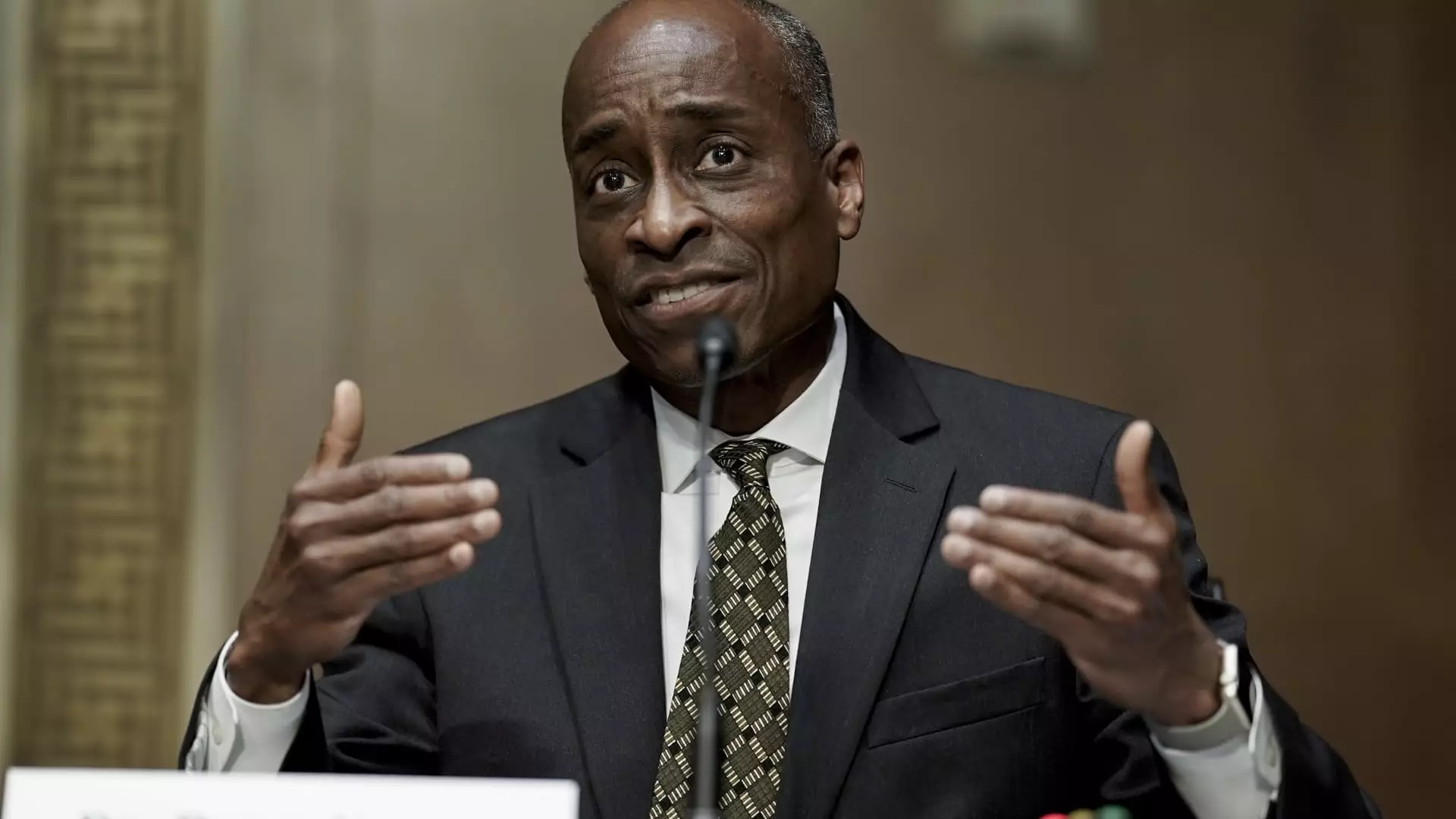In an era marked by volatility and unpredictability, the U.S. Federal Reserve stands at a crucial juncture, as articulated by Federal Reserve Vice Chair Philip Jefferson during a recent speech at Lafayette College. Jefferson’s insights emphasize a cautious and measured approach to monetary policy, particularly in the context of an uncertain economic landscape. This perspective not only highlights the complexities of current economic conditions but also reflects the intricacies involved in crafting effective monetary strategies aimed at achieving desired economic outcomes.
Jefferson describes the U.S. economy as strong, noting a resilient labor market alongside signs indicating a gradual easing of inflation. However, he acknowledges that progress toward the Fed’s 2% inflation target is neither linear nor assured, referring to the journey as a “bumpy” one. The Federal Reserve has historically employed a balance of proactive and reactive policies to combat inflation while supporting economic growth, and Jefferson’s emphasis on caution suggests a recognition of the need for nuanced decision-making in response to fluctuating economic indicators.
Moreover, recent Federal Open Market Committee (FOMC) actions underscore this cautious approach, as the committee decided to keep the policy rate stable following a series of cuts designed to counteract rising inflation. This stability is essential not only for maintaining investor confidence but also for ensuring that economic growth does not stall due to abrupt changes in monetary policy.
Policy Adjustments and Future Outlook
The call for gradual adjustments to monetary policy is particularly relevant in light of the ongoing discussions about economic uncertainty stemming from various external factors, including international trade relations. Jefferson’s remarks allude to the potential ramifications of tariff negotiations, especially between the U.S. and its key trading partners like China, Canada, and Mexico. The intricate web of global trade dynamics introduces another layer of complexity for policymakers, as these relationships can significantly impact U.S. economic activity and inflation rates.
Jefferson elucidates the volatility of economic forecasts, emphasizing that the unpredictability of government policies adds another layer of difficulty for economic predictions. He articulates a vision in which the Fed may need to remain patient, potentially lengthening the period of monetary restraint, should inflation persist or labor market conditions falter. This outlook encapsulates the challenging balancing act faced by the Federal Reserve: fostering economic growth while containing inflationary pressures.
The Vice Chair’s commentary on the uncertainty enveloping economic forecasts merits particular attention. His admission that he attaches a “high degree of uncertainty” to future projections is a candid assessment that reflects the broader economic landscape. While policymakers often strive for precision, the truth remains that economic realities are frequently shaped by unforeseen circumstances. These can range from geopolitical tensions to shifts in consumer behavior, all of which can dramatically influence inflation rates and employment figures.
Understanding these uncertainties is vital for formulating effective monetary policy. The challenge lies not only in reacting to current conditions but also in anticipating potential future scenarios that could influence economic stability. Jefferson’s framework for policy development recognizes that flexibility is essential in navigating this unpredictable terrain, advocating for a responsive and adaptable approach to governance.
As the Federal Reserve charts its course amid these challenging conditions, the insights of Vice Chair Philip Jefferson provide a guiding light. His emphasis on caution and the need to evaluate evolving conditions presents a thoughtful framework for approaching future monetary policy decisions. The interplay between economic resilience, inflationary pressures, and global influences makes for a complex narrative, requiring that the Fed not only aims for stability but remains vigilant in its strategy moving forward.
In light of these considerations, the path ahead for the Federal Reserve lies in a careful balancing act: promoting sustainable economic growth while remaining prepared to address inflationary challenges as they arise. With the stakes high, Jefferson’s measured approach serves as a crucial reminder of the intricacies involved in steering the U.S. economy through turbulent waters.


Leave a Reply